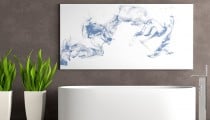Interior design and decoration isn’t a science. Yes, there are…
How to Avoid Poor Quality Canvas Photo Prints
It’s difficult to say, sometimes, whether a bad retail experience when purchasing canvas photo prints for your home is the result of incompetence or was simply an isolated incidence of bad luck. The exciting new world of photo printing has expanded not just our freedom to decorate our home and enjoy our own artistic tendencies, it’s also expanded our choice of places to do business with. This necessarily means we’re often dealing with companies we’ve never dealt with before and have no physical sense of.

There’s nothing worse than uploading your gorgeous photos, paying honest money, and receiving a blurry piece of canvas art back, with low-quality materials, poor image quality, and an overall cheap and shabby appearance. Here’s the go-to guide on how to avoid that before you press the ‘order’ button.
Canvas Photo Prints: Manage Your End
The first and most important step here is to remember that whatever company you choose to purchase your canvas art from, they’re not magicians. If you send a low-resolution photo file, or a poorly-composed and badly-lit photo, you’re going to get a poor quality canvas back (in terms of image quality) no matter what. The canvas material might be high-end, the workmanship that created the canvas might be top-notch, but a bad photo will always make your canvas photo prints look cheap.
Do your diligence: Make sure your photo is a minimum of 300dpi. If it’s less, up-size the resolution and crop down, or contact the company you’re using to see if they can do anything on their end. Apply filters to brighten, sharpen, or modify the photo, and make sure you’re happy with it before uploading. If you have a good-quality colour printer, print out a hardcopy and make sure it looks good. The work you put in before ordering will show up on your walls.

Materials
Some canvas prints companies throw around terms you may be unfamiliar with. Here’s what to look for:
- Museum Quality. This phrase doesn’t really mean anything, and can be used as ‘marketing speak’. Instead, look for GSM, which is a measure of the quality of the canvas material. A minimum of 320 GSM should be mentioned, but higher is better. Also avoid 100% polyester canvas material; it doesn’t take ink well and doesn’t hold tension well, but it is cheap – and looks it. Instead, make certain your canvas will be 100% cotton or a cotton-polyester blend.
- Protective Coating. Make sure this is mentioned. It’s essential to keep your canvas photo prints from suffering sun and moisture damage.
- Giclée. While this term originally referred to fine art printed on very high-quality inkjet printers, it has no accepted definition and is unregulated, so it means whatever people want it to mean. More often than not, seeing this word is a reason not to purchase from that company.
Your canvas photo prints will represent you on your walls. They have to be of the highest quality or you’ll waste money and time. Starting with high-quality images is essential, but just as essential is having a grasp on the basics of what goes into a good-quality piece of canvas art in the first place. When you’ve done your homework, we’re confident our specs will live up to your expectations – click here and let us dazzle you with our high-quality products!



